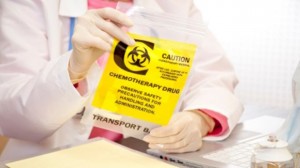Most Common Treatments for Pediatric Leukemia
 Pediatric cancer statistics show that leukemia is the most common childhood cancer, although it can take on one of several different forms. Almost 35% of all pediatric cancer cases are leukemia, and it often strikes children younger than 10 years of age. The two most common forms are acute lymphocytic leukemia (ALL) and acute myelogenous leukemia (AML). In general the bone marrow and blood cell production are dangerously affected.
Pediatric cancer statistics show that leukemia is the most common childhood cancer, although it can take on one of several different forms. Almost 35% of all pediatric cancer cases are leukemia, and it often strikes children younger than 10 years of age. The two most common forms are acute lymphocytic leukemia (ALL) and acute myelogenous leukemia (AML). In general the bone marrow and blood cell production are dangerously affected.
Treating the First Symptoms of Leukemia
The first treatment option for leukemia often involves addressing the symptoms that likely helped lead to the diagnosis. Pediatric cancer statistics show that these often include anemia, abnormal bleeding, infections, and a lack of red blood cells that reduce oxygenation in the body. Children must be treated for these and other cancer related symptoms before more traditional cancer treatments can safely and effectively be used. Common treatments of these symptoms include:
- Antibiotic therapies
- Treatments with blood growth factors
- Transfusions of platelets and red blood cells
Chemotherapy Treatment for Pediatric Leukemia
The most common treatment for pediatric leukemia is chemotherapy. Statistics for childhood cancer reveal that chemotherapy used in higher doses for a shorter duration are more effective for treating acute myeloid leukemia, while lower doses of chemo for as long as three years can be most effective for acute lymphocytic leukemia. The value of chemotherapy for treating leukemia is that it reaches all areas of the body, just as the affected blood and bone marrow can be throughout the body. There are several different chemotherapy drugs used to treat pediatric leukemia, and often a combination of them will be given at one time and then a cycle of new drugs will be introduced at various phases.
Stem Cell Treatment for Pediatric Leukemia
When chemotherapy is not working well, some doctors decide to use a stem cell transplant (SCT) to boost the ability of the body to withstand a higher dose of chemotherapy or radiation. These stem cells can come from various sources, included an umbilical cord match, a peripheral blood source (PBSCT), or a bone marrow donor. Cancer statistics show that the most typical sources of healthy blood cells donated from another person, also known as an allogeneic transplant, are relatives of the patient. When matching family donors cannot be found there are donor registries that can help to match patients with a donor who has the same tissue type.
Other Treatments for Childhood Leukemia
Statistics for childhood cancer do not show a high likelihood of improvement with the use of radiation therapies. However, it is sometimes used to prevent or treat the spread of the disease to areas such as the brain or testicles. If a stem cell transplant is done radiation is also sometimes used just before the transplant as a way of maximizing the cancer treatment right before the healthy cells are introduced.
New, targeted drugs are also being developed to treat childhood leukemia that will have the most impact on the specific type of the disease. Some families also pursue clinical trials for their children’s treatment.
Want to get involved and help us help kids battling cancer? Then join us and be somebody’s hero today.
